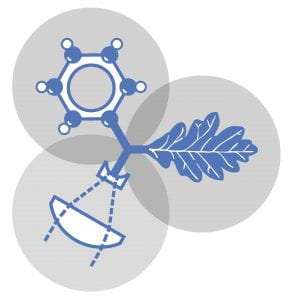
Plants are able to regenerate whole body parts like roots and shoots with relative ease because they demonstrate amazing cellular plasticity. Masters of dedifferentiation, plants not only retain pools of stem cells throughout their lives, but also create new stem cells in response to developmental and environmental cues. At the Rowland, the primary interest of the Spicer Lab was in the role of parenchyma cells in shaping large woody plants – namely, through their ability to dedifferentiate and generate new meristems in response to wounding, and during the transition to secondary growth.
Because plant cells are cemented together throughout development (there is no cell migration in plants), coordinated differentiation and specialization of cells requires cell-to-cell communication. The directed cell-to-cell movement of the plant hormone auxin (indole-3-acetic acid) is known to regulate many aspects of plant growth and cellular differentiation. Their research was centered on the potential role of auxin as a source of ‘positional information’ in the origin of new stem cells through the dedifferentiation of parenchyma. Because of their focus on woody tissue (i.e., secondary growth), in which plant cells have extremely thick cell walls, much of this work requires the development and/or modification of techniques in plant microscopy and molecular biology. They were especially interested in developing methods to image live cells in woody tissue.